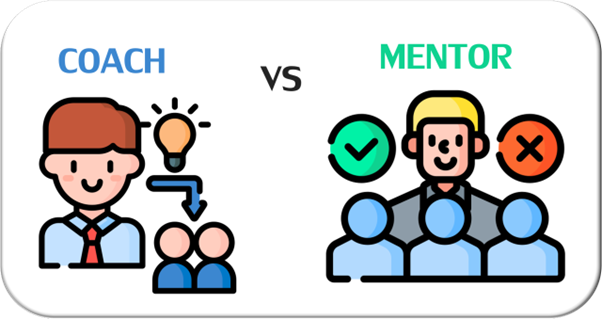Are you a salesperson who finds yourself wishing there were more hours in the day? Between prospecting, follow-ups, meetings, admin, and hitting targets, time can feel like your most limited resource. The truth is, the best salespeople don’t mysteriously have more time than everyone else. They’ve simply learned how to use it better.
At KONA Training, we often see that time management is the hidden skill that separates top performers from the rest. Mastering your time isn’t about doing more, it’s about doing what matters most.
If you’re ready to take control of your day and boost your results, here are 10 time management hacks that successful salespeople swear by.

If You Had to Pick 4 of the Best Time Management Hacks for Busy Salespeople?
The most effective time management hacks for salespeople are time blocking for prospecting, batching similar tasks, setting strict email windows, and using the two-minute rule for quick wins.
1. Start with a Power Hour
Top performers don’t start their day by checking emails. They start with action. Spend your first hour focused on high-value activities like calling new leads, following up with hot prospects, or preparing proposals.
At KONA Training, we call this your “Power Hour” because it sets the tone for your entire day. If you win the first hour, you win the day. To learn more about KONA’s Power Hour Programs, click here.
2. Plan Tomorrow Before You Finish Today
Before you log off, take ten minutes to plan tomorrow. Write down your top three priorities and block out time for them in your calendar. This simple step helps you walk into each day with clarity and purpose. It’s something KONA Training coaches swear by because it reduces stress and keeps you laser-focused from the moment you start work.
3. Master the Art of Time Blocking
What is time blocking for sales?
Time blocking dedicates fixed calendar slots to specific activities like prospecting or follow-ups, preventing reactive work from consuming your selling time.
Successful salespeople don’t let their day get hijacked by distractions. They use time blocking to schedule every important task. Whether it’s prospecting, admin, or learning, they dedicate specific blocks of time to each. At KONA Training, we teach sales teams to treat these blocks like appointments with themselves. They’re non-negotiable.
4. Control Your Inbox
Emails can eat your entire morning if you’re not careful. Instead of reacting to every notification, set specific times to check and respond to emails. For example, once mid-morning and once mid-afternoon. KONA Training clients often report that this one change alone gives them back hours every week.
5. Use the Two-Minute Rule
If a task takes less than two minutes, do it immediately. It’s a simple rule, but it prevents small tasks from piling up and overwhelming your day. Successful salespeople don’t let tiny to-dos clutter their mental space.
The team at KONA Training encourages sales professionals to keep their focus clear by getting the quick wins done on the spot.

6. Prioritise by Impact, Not Urgency
It’s easy to get caught up in what feels urgent instead of what actually matters. Great salespeople prioritise tasks that move the needle, like connecting with key clients or refining proposals, rather than getting stuck in busywork. KONA Training emphasises the importance of evaluating every task through this lens: Is this helping me sell more or serve better?
7. Learn to Say No
Time management isn’t just about doing more; it’s also about protecting your time. Saying yes to every request spreads you too thin.
The best salespeople say no to low-value meetings and distractions so they can focus on their goals. At KONA Training, we remind our clients that every “no” to something unimportant is a “yes” to success.
8. Automate and Delegate
You don’t have to do everything yourself. Use automation tools for follow-ups, scheduling, and CRM updates. Delegate admin work whenever possible. Smart salespeople focus their time on conversations that build relationships and close deals.
KONA Training helps teams identify where they can streamline their workflow to gain back valuable selling time.
9. Track Your Time Like You Track Sales
If you don’t measure how you spend your time, you can’t improve it. Track your activities for a week and see where your hours go.
Most salespeople are shocked at how much time disappears into admin or low-value tasks. KONA Training encourages time audits as a way to uncover hidden inefficiencies and make better use of every working hour.
10. Protect Your Energy, Not Just Your Time
Time management isn’t only about the clock, it’s also about your energy. Successful salespeople schedule their hardest tasks when they feel sharpest and take breaks before burnout hits. KONA Training often reminds sales professionals that a well-rested mind is your most powerful tool. You can’t sell effectively if you’re running on empty.

Time management isn’t a talent you’re born with; it’s a skill you can learn. The most successful salespeople treat their time with the same care they give their biggest client. If you start applying even a few of these hacks, you’ll notice your productivity and results soar.
If your sales team is ready to master their time and take their performance to the next level, contact KONA Training. We specialise in tailored Sales Training that helps sales professionals sell smarter, not harder.
Reach out today and discover how KONA Training can help your team make every minute count.
Call 1300 611 288 or Email info@kona.com.au
Author – Garret Norris – https://www.linkedin.com/in/garretnorris/
















































































































